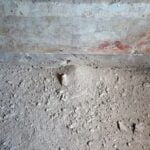Radio has long been a popular medium for entertainment and news, offering a diverse range of stations and genres for listeners to enjoy. However, there is nothing more frustrating than poor radio reception that results in static, interference, or cut-off signals. To enhance the listening experience and ensure uninterrupted enjoyment of your favorite stations, it’s essential to improve radio reception in your home.
In today’s digital age, where streaming services and podcasts are prevalent, radio still holds its charm for many individuals. Whether it’s tuning in to your preferred talk show, catching up on the latest music hits, or staying informed with breaking news updates, having good radio reception is crucial. It allows you to fully immerse yourself in the audio content and keeps you connected to the world outside.
Unfortunately, various factors can interfere with radio reception at home. Distance from broadcast towers, physical obstructions like buildings or trees, and even electronic devices within close proximity can all diminish signal strength and quality. As a result, your listening experience may be marred by constant drops in signal or an irritating background hum.
Don’t let poor reception hinder your enjoyment of radio at home. In this article, we will delve into the factors that affect radio reception and provide practical solutions to improve it. From understanding the basics of what impacts signal strength to finding the ideal frequency for optimal reception and implementing strategic antenna placements – we have got you covered. So let’s dive in and unlock the secrets to better radio reception in your own abode.
The Basics
Radio reception in your home can sometimes be frustrating due to poor signal quality. Understanding the factors that affect radio reception is essential in finding ways to improve it. There are several factors that can interfere with radio signals and impact reception in a home setting.
Distance
One of the critical factors that can affect radio reception is the distance between your home and the broadcasting station. The farther away you are from the station, the weaker the signal will be. This can result in reduced sound quality or even complete signal loss. In areas where you are far from broadcasting stations, it might be more challenging to achieve optimal reception.
Physical Obstructions
Physical obstructions such as buildings, trees, or hills can impede radio signals from reaching your home. These obstructions act as barriers that block or weaken the signal strength. For example, if there is a dense forest between your home and the broadcasting station, it may pose challenges for good reception.
Electronic Devices
Electronic devices within your home can also interfere with radio signals. Appliances like televisions, computers, microwaves, or even Wi-Fi routers generate electromagnetic waves that can disrupt radio frequencies. Positioning your radio away from these devices or turning them off while listening to the radio can help minimize interference.
Understanding these basic factors will help you identify potential issues that may be affecting your radio reception at home. By addressing these factors, you can take steps towards improving your overall radio listening experience.
Navigating the Spectrum
Understanding Radio Frequency Bands
To improve radio reception in your home, it is important to understand the concept of radio frequency and the different bands available. The radio frequency spectrum is divided into several bands, each with its own characteristics and applications. The two most commonly used bands for broadcasting are the AM (Amplitude Modulation) and FM (Frequency Modulation) bands.
AM band operates at frequencies between 535 kHz and 1705 kHz, while FM band operates at higher frequencies ranging from 88 MHz to 108 MHz. AM signals are usually better at penetrating obstacles such as buildings and can travel longer distances compared to FM signals. However, FM signals generally provide better audio quality with less interference.
Identifying Optimal Frequencies
Finding the least congested and interference-free frequency is crucial for optimal reception. To determine which frequency will work best for you, start by scanning through the available stations on your radio. Take note of any stations that have a weak or distorted signal, as these may have interference from other nearby stations or electronic devices.
Once you have identified these problematic stations, use an online resource or app that provides information about station coverage areas and frequencies in your location. Look for frequencies without any strong signals within their coverage area to avoid interference. It may be helpful to consult local broadcasting authorities or enthusiast forums for further guidance on finding the ideal frequency for your specific area.
Manual Tuning and AFC (Automatic Frequency Control)
In addition to manually selecting a specific frequency on your radio, many radios also come equipped with Automatic Frequency Control (AFC) feature. AFC allows your radio to automatically fine-tune itself to achieve optimal reception by compensating for any slight drifts or variations in the selected frequency. This feature can be particularly useful if you are experiencing minor signal disruptions or fluctuations.
Experimenting with different frequencies and utilizing AFC can help you find the best radio frequency for optimal reception in your home. Remember that environmental factors and geographical location can also play a role in signal strength, so it may be necessary to repeat this process periodically to maintain the best reception possible.
Upgrading Your Equipment
Investing in better radios and antennas is a crucial step towards improving radio reception in your home. While it may be tempting to stick with older or cheaper equipment, upgrading to high-quality radios and antennas can make a significant difference in the clarity and strength of the radio signals you receive.
When it comes to purchasing radios, there are several brands and models known for their strong reception capabilities. One popular option is the Sangean WR-11 AM/FM Table Top Radio, which offers excellent sensitivity and selectivity for both AM and FM frequencies. Another highly recommended radio is the Sony ICF-S10MK2 Pocket AM/FM Radio, which is compact yet powerful, ideal for both indoor and outdoor use.
In addition to upgrading your radio, investing in a quality antenna is equally important. The antenna serves as a bridge between the radio waves in the air and your receiver. A good antenna should be designed to capture the maximum amount of signal with minimal interference.
One top-rated antenna choice is the Winegard LNA-200 Boost XT HDTV Preamplifier, which not only improves television reception but also enhances radio reception. Another reliable option is the Antop UFO Omni-directional Outdoor Antenna, offering 360-degree coverage and superior reception performance.
By upgrading your equipment to these recommended radios and antennas, you can significantly enhance your home’s radio reception capabilities. These devices are specifically designed to minimize interference and improve signal strength, leading to a clearer and more enjoyable listening experience. Remember that investing in better equipment will ultimately pay off by allowing you to tune into your favorite stations without any frustrating interruptions caused by poor reception.
Placement Matters
When it comes to improving radio reception in your home, the placement of your radio and antenna plays a crucial role. Finding the ideal location for these devices can significantly impact the quality of the signal you receive. Here are some guidance and tips on positioning your radio and antenna strategically:
- Find a central location: To ensure maximum coverage, it is advisable to place your radio and antenna in a central location within your home. This will help minimize interference caused by physical obstructions such as walls or furniture.
- Avoid electronic interference: Electronics like televisions, computers, or wireless routers can interfere with radio signals. Keep your radio away from these devices to avoid any potential disruptions.
- Elevate the antenna: The placement of your antenna is equally important. Elevating it can increase its range and improve reception. Consider mounting the antenna on the rooftop or high up in a window where it has a clear line of sight to nearby transmitters.
- Orient the antenna properly: The orientation of your antenna can also impact reception quality. If you are receiving signals from multiple directions, consider using a multi-directional or omnidirectional antenna that can pick up signals from all angles.
- Minimize interference from household objects: Avoid placing metal objects near your antenna as they can obstruct the signal or cause reflection issues. Similarly, keep other objects like curtains or plants away from the radio to prevent any interference.
Remember that every home is unique and may require some experimentation to find the optimal placement for your radio and antenna. Try different orientations, elevations, and locations until you achieve satisfactory reception quality.
By strategically positioning your radio and antenna based on these tips, you should experience improved signal strength and reduced chances of interference while enjoying your favorite stations at home.
Fine-Tuning Techniques
When it comes to improving radio reception in your home, fine-tuning techniques can make a significant difference in the quality of the signal you receive. By making minor adjustments to your radio and antenna settings, as well as considering the angle at which they are positioned, you can optimize the reception for maximum clarity and minimal interference.
One technique to consider is antenna tilting. This involves adjusting the angle of your antenna to find the sweet spot where signal reception is strongest. Start by tilting the antenna slightly upward or downward, then test the reception to determine if there is an improvement. Repeat this process until you find the angle that provides the best reception.
Another important aspect of fine-tuning is considering radio directionality. Some radios have directional capabilities, meaning they can pick up signals better from a specific direction. Take note of where your desired radio stations are located in relation to your home and adjust the position of your radio accordingly. By pointing your radio towards the radio station’s broadcasting tower or source, you can enhance reception by narrowing down interference from other directions.
| Fine-Tuning Technique | Instructions |
|---|---|
| Antenna Tilting | – Adjust antenna angle slightly upwards or downwards
|
| Radio Directionality | – Determine location of desired radio stations
|
While these techniques may seem simple, they can have a significant impact on improving your radio reception at home. It’s worth taking some time to experiment with different settings and angles to find what works best for your specific location and radio equipment.
Don’t be afraid to make small adjustments and fine-tune regularly, as environmental factors or changes in your home setup might require occasional recalibration. By maximizing reception through these techniques, you can enjoy clear and uninterrupted radio listening at home.
Boosting the Signal
Signal amplifiers and extenders can be valuable tools for boosting radio reception in the home. These devices are designed to strengthen weak signals, eliminate interference, and extend the range of radio transmissions. By utilizing signal amplifiers and extenders, listeners can greatly improve their overall radio listening experience.
Signal amplifiers, also known as signal boosters or amplifiers, work by taking a weak radio signal and boosting its power before transmitting it to the radio receiver. This increased power allows for stronger, clearer reception even in areas with poor signal strength. Signal amplifiers are particularly useful for individuals who live in remote or rural areas where the radio signals may be weaker due to distance from transmission towers.
Signal extenders, on the other hand, are devices that help increase the coverage area of a radio transmitter. These devices can be helpful in larger homes or buildings where a single radio transmitter may not reach all areas effectively. Signal extenders essentially act as relay stations, picking up the original signal and rebroadcasting it to ensure that every corner of the house receives strong reception.
When selecting a signal amplifier or extender, it is important to consider factors such as compatibility with your specific radio equipment and the size of your home. It is also advisable to choose devices from reputable brands known for their reliable performance.
It’s important to note that while signal amplifiers and extenders can significantly improve reception, they do have limitations. They rely on an existing signal for amplification or extension and therefore cannot create reception where there is none. Additionally, excessive use of signal amplification may lead to interference or distortion if not properly calibrated.
By utilizing signal amplifiers and extenders strategically, however, homeowners can enjoy enhanced reception throughout their entire living space without experiencing frustrating dropouts or static-filled broadcasts.
Alternative Solutions
In today’s digital age, traditional radio is no longer the only option for listeners seeking entertainment and news. With the advent of online radio and streaming services, there are now alternative solutions for those looking to improve their radio reception at home. This section explores the benefits of online radio and streaming options as well as suggests reliable platforms and apps that offer a wide range of radio stations for listeners to enjoy without worrying about reception.
Online radio allows listeners to access a vast selection of stations from around the world, offering an unparalleled variety of genres, languages, and programming. Platforms such as TuneIn, iHeartRadio, and Radio Garden provide users with an extensive collection of radio stations that can be accessed through their websites or dedicated apps. Whether you have a specific musical taste or prefer talk shows and podcasts, online radio platforms have something for everyone.
Streaming services like Spotify, Apple Music, and Pandora also offer a diverse range of music options while providing personalized recommendations based on your listening habits. These services allow you to create customized playlists or explore curated playlists generated by experts. For those interested in discovering new music or artists similar to their favorite genres, streaming options can be a great solution.
One advantage of online radio and streaming is the elimination of reception issues commonly faced with traditional radios. As long as you have a reliable internet connection, you can enjoy uninterrupted listening experiences anytime, anywhere. This makes online radio and streaming particularly appealing in areas with poor terrestrial signal coverage or where interference from physical obstructions is prevalent.
For individuals who want to improve their home listening experience without investing in expensive equipment or undergoing complex setup processes, online radio and streaming options serve as practical alternatives. By exploring these platforms and utilizing their features effectively, you can ensure a consistent supply of high-quality audio content without any reception-related frustrations.
| Platform/App Name | Description |
|---|---|
| TuneIn | A platform that offers access to over 100,000 radio stations and more than 5.7 million podcasts. |
| iHeartRadio | An app that provides access to thousands of live radio stations and customizable playlists across various genres. |
| Radio Garden | An interactive website that allows users to explore live broadcasts from around the world by navigating an interactive globe. |
Bonus Tips and Troubleshooting
In addition to the previously mentioned techniques, there are several bonus tips and troubleshooting solutions that can further improve radio reception in your home.
- Grounding antennas: In some cases, grounding your antenna can significantly enhance its performance. This involves connecting a wire from the grounding terminal on your antenna to a ground rod or cold water pipe. Grounding helps reduce interference and improves signal strength.
- Using signal repeaters: Signal repeaters are devices that amplify weak signals and rebroadcast them, extending their range. If you have a particularly weak signal in a specific area of your home, installing a signal repeater can help extend the coverage and provide better reception.
- Seeking professional assistance: If you’ve tried all the previous techniques and are still experiencing poor radio reception, it may be beneficial to consult with a professional technician. They can assess your specific situation, identify any underlying issues, and provide expert advice or recommend specialized equipment for optimal reception.
4. Troubleshooting common issues:
- Check all connections: Ensure that all cables and connections are secure and properly plugged in.
- Update antenna firmware (if applicable): Some newer antennas allow for firmware updates which may improve reception.
- Adjust the orientation of the antenna: Try rotating or repositioning the antenna to find an angle that provides better reception.
- Check for interference from other electronic devices: Move electronic devices away from the radio or antenna as they can interfere with the signal.
- Insulate cables properly: Use cable insulators to reduce interference caused by cable proximity or overlapping.
By applying these additional tips and troubleshooting solutions, you’ll have a greater chance of improving your radio reception at home. Remember that every situation is unique, so don’t hesitate to experiment with different approaches until you achieve satisfactory results. Enjoy uninterrupted radio listening experience in your home.
Conclusion
In conclusion, improving radio reception in your home is not only possible but also crucial for enjoying a seamless and uninterrupted listening experience. Throughout this article, we have discussed various factors that can affect radio reception, including distance, physical obstructions, and electronic devices, as well as the importance of finding the best radio frequency for optimal reception.
We have also highlighted the significance of investing in high-quality radios and antennas, strategically positioning them, and fine-tuning their settings to maximize reception quality.
By following the tips and techniques provided in this article, you can greatly enhance your radio reception at home. Whether it’s adjusting the angle of your antenna or utilizing signal amplifiers and extenders to boost weak signals, there are numerous solutions available. Additionally, we have explored alternative options such as online radio and streaming services that offer a wide range of stations without worrying about reception issues.
It is our hope that by implementing these suggestions and troubleshooting any common issues that may arise, you will be able to enjoy impeccable radio reception at home. Don’t let poor reception hinder your enjoyment of this timeless medium for entertainment and news. With a little effort and investment in the right equipment, you can create an environment where crystal-clear radio signals fill your home with your favorite music, shows, and news broadcasts.
Frequently Asked Questions
How do I fix poor AM radio reception?
To fix poor AM radio reception, there are several steps you can take. First, ensure that your antenna is properly positioned and oriented towards the radio station you want to listen to. Check if the antenna is damaged or corroded, as this can hinder reception quality.
If needed, replace the existing antenna with a longer one or add an external antenna for better signal capture. Additionally, consider using a signal booster or an AM radio signal amplifier, which can enhance weak signals and improve reception. Another factor to consider is interference from electronic devices and buildings around you, so try moving away from such sources if possible.
What causes poor AM radio reception?
There are various factors that can cause poor AM radio reception. One common cause is physical obstacles like tall buildings or hills that block the radio signals from reaching your location effectively. Distance also plays a role as AM radio waves have limited range compared to FM signals.
Interference from other electronic devices such as power lines, appliances, or even LED lights can disrupt the clarity of AM radio frequencies. Environmental conditions like thunderstorms or solar flares may introduce additional noise and hamper signal reception as well.
How can we increase radio frequency range?
Increasing radio frequency range can be achieved through a few methods. One approach is to use a higher-power transmitter to transmit signals over longer distances without losing quality. However, this might require obtaining appropriate licenses and adhering to legal regulations regarding transmission power limits.
Alternatively, extending the height of the transmitting antenna can expand the coverage area by facilitating better line of sight between transmitter and receiver locations. Another option is utilizing technology like repeaters or relays strategically placed along the desired range to amplify and rebroadcast signals at different intervals in order to extend coverage further. Advanced technologies like satellite broadcasting also provide wider frequency reach but may involve significant infrastructure investment and operational considerations

I’m thrilled to have you here as a part of the Remodeling Top community. This is where my journey as an architect and remodeling enthusiast intersects with your passion for transforming houses into dream homes.





